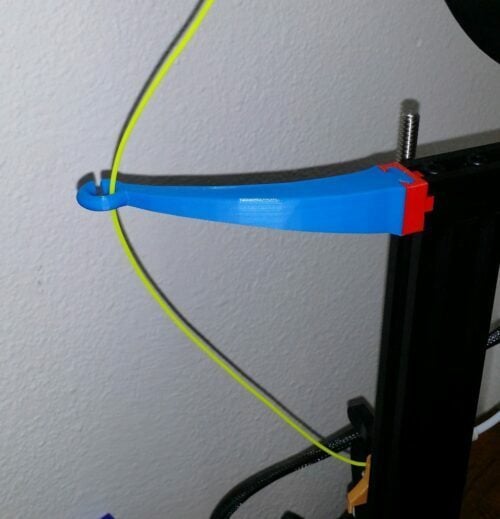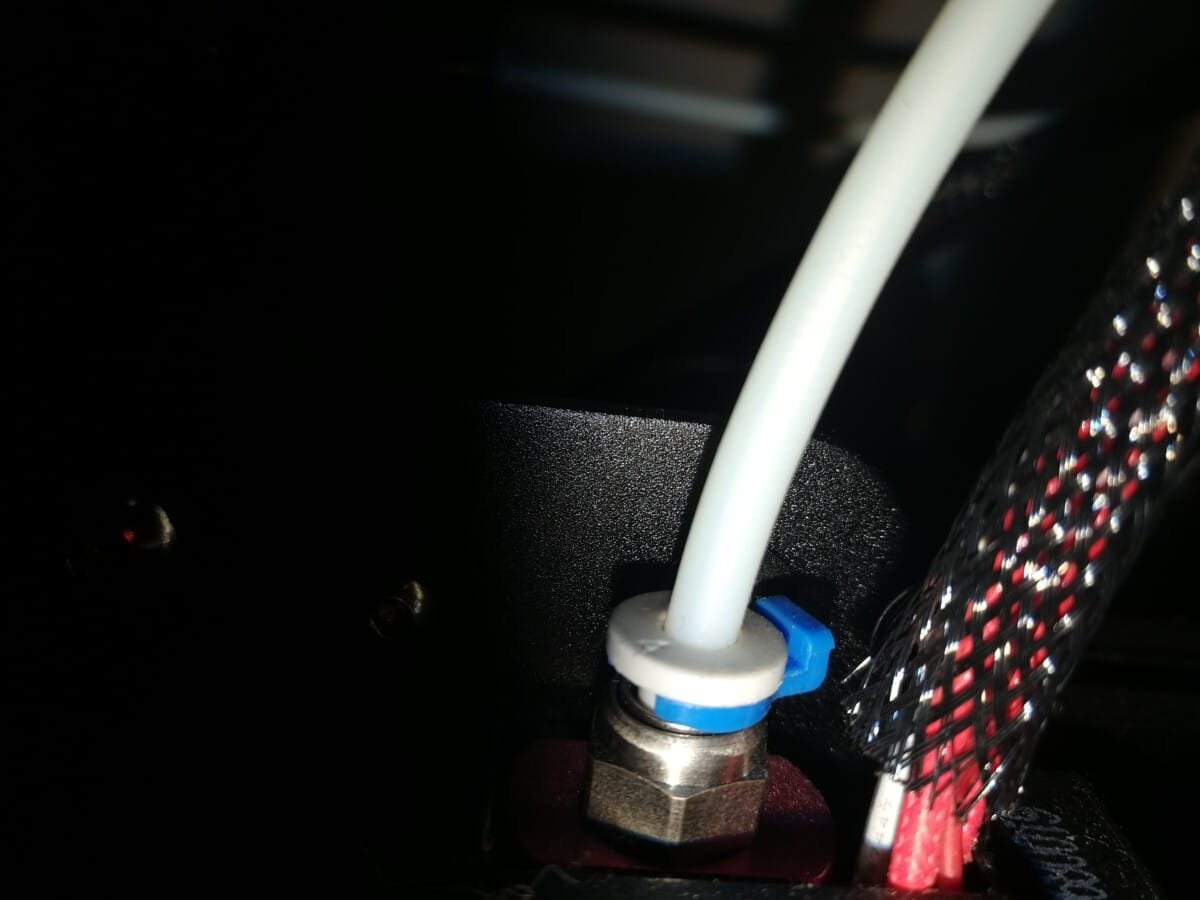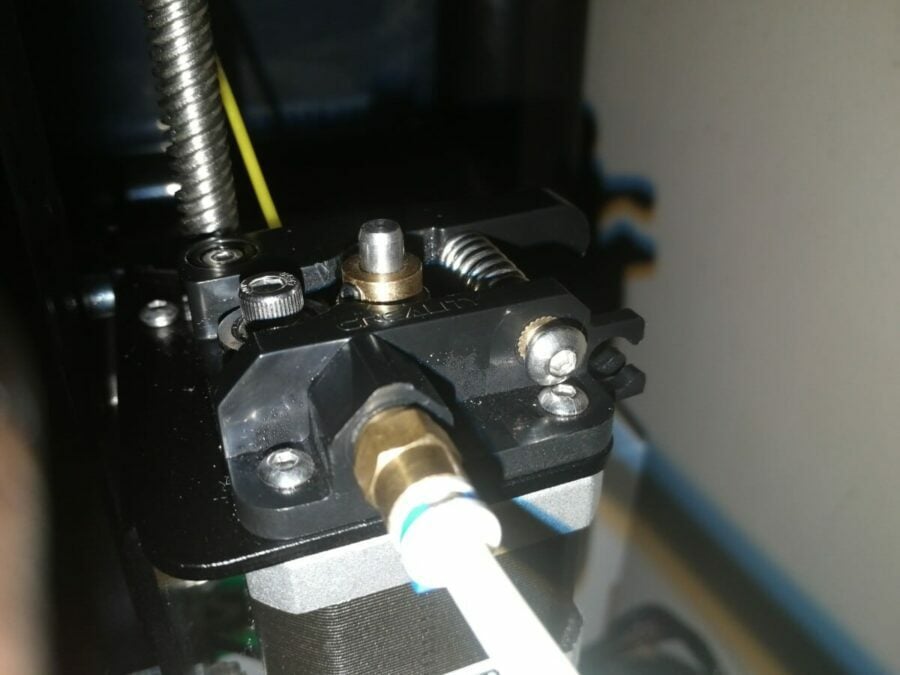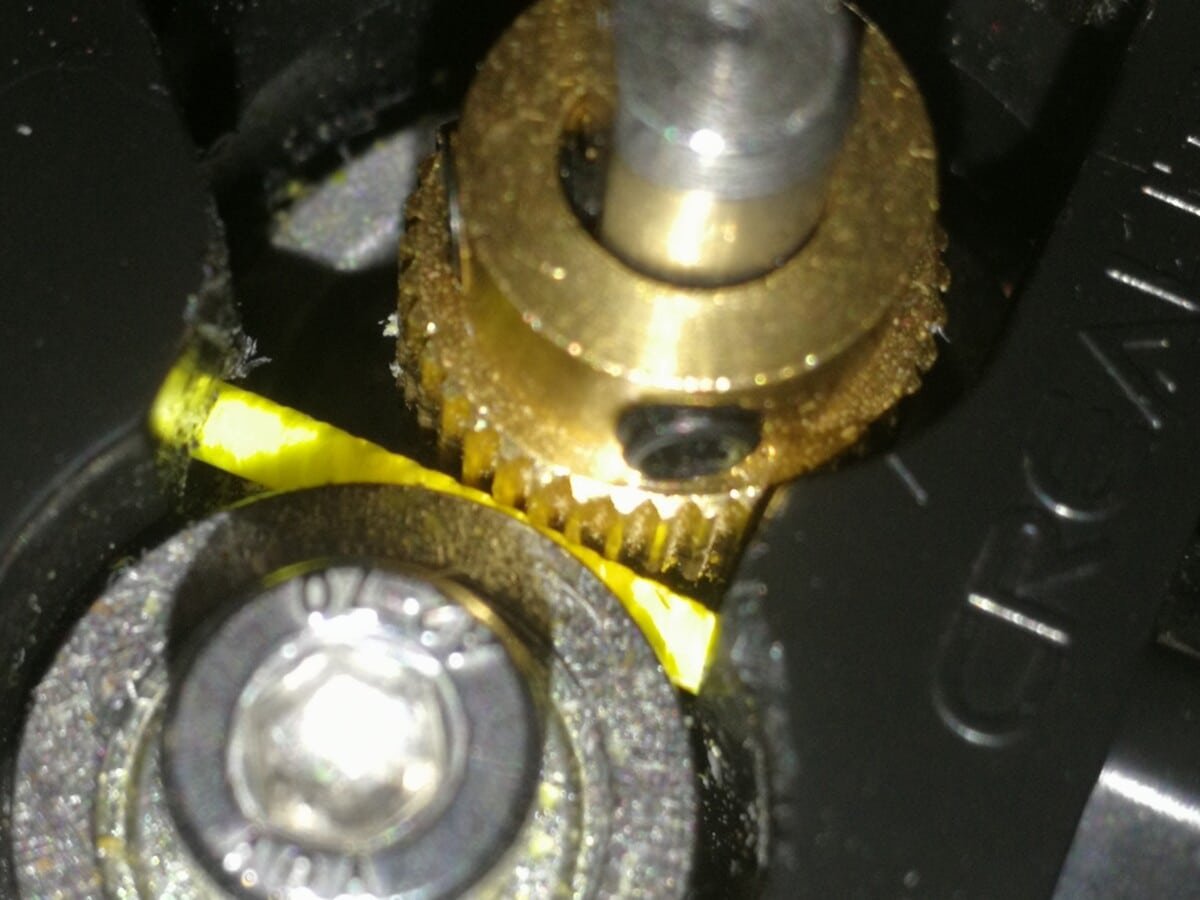Mp Mini Delta 3d Wont Feed
One time, I remember trying to start off a 3D print, but my filament just wasn't feeding through properly. It took me a while to finally figure out what was happening, why it was happening, and how to fix it. This article will detail that process and some quick solutions to help you if you also experience this.
If your filament is not feeding properly, you should reduce retraction settings, check your PTFE tube for clogs or damage near the ends, unclog your nozzle, check the teeth on your extruder for wear, adjust idler pressure on your feeder gear and check your extruder motor for instability.
Once you do a series of checks and correct them as you find issues, your filament should feed through your 3D printer just fine.
Please keep reading for more details behind these solutions to make sure you get it right.
Why Does Filament Not Feed Properly? Causes & Solutions
- Blockage in Extrusion Path
- Bad Retraction Settings
- PTFE Liner Worn Out
- Incorrect Spring Tension or Idler Pressure
- Worn Out Extruder/Feeder Gears
- Weak Extruder Motor
Blockage in Extrusion Path
You have to make sure your extrusion path is clear and free of obstructions, so your filament can feed through at the proper rate. This goes anywhere from the filament flowing inside the extruder, to the extruder itself, through the PTFE tubing if you have a Bowden set up, through to the nozzle.
Solution
- Check that your filament have a smooth and clear path to feed into the extruder. The spool holder should be close to your extruder and the filament ideally should be coming an angle which is fairly curved in the flat direction. You can print a filament guide to achieve this.

- Make sure your PTFE tube is clear of obstructions or loose filament. Capricorn PTFE Tubing from Amazon has a smooth internal path which reduces obstructions.

- Clean out your nozzle, especially if you change printing materials a lot – Use some good cleaning filament (Novamaker 3D Printer Cleaning Filament from Amazon) for a good clean.

Once your extrusion path is cleared and allows filament to pass through smoothly, you should be a lot closer to the way of being able to feed your filament properly.
Bad Retraction Settings
I've been through this one before, so I know how bad retraction settings can negatively affect your prints, and even cause them to fail altogether. The retraction settings mainly consist of retraction length and retraction speed.
These are the length and speed at which your filament gets pulled back into the extruder, so material doesn't leak out filament while moving to the next extrusion location.
Solution
People usually have their retraction lengths and speeds way too high. I would lower retraction length to around 4-5mm for Bowden (2mm for a Direct Drive extruder) and retraction speed to 40mm/s as a good starting point, then you can trial and error that as you wish.
I wrote an article called How to Get the Best Retraction Length & Speed Settings
You don't want your filament to be generating extra strain from the pressure of the back and forth movements from retractions.
The proper way to do this is to find the optimal settings for your 3D printer, whether that is from researching online or doing it yourself.
I would get a small test print and print it several times using different combinations of retraction speeds and lengths to see which one delivers the best quality.
A very popular print file for testing your 3D printer is the 'Test Your Printer V2' from Thingiverse.
PTFE Liner Worn Out

Now come to the PTFE liner, if you observe that it has worn out because of the heat, this can be one of the reasons for the filament not feeding properly. This could even clog the filament to become smaller in diameter than usual.
Heat creep can occur when your heatsink isn't dissipating heat properly, which is when heat travels to where it isn't supposed to, back into the end of the PTFE tubing.
Solution
Double-check the ends of your PTFE tube, especially on the hotend side and replace it if necessary. Get yourself a high quality, high temperature resistance Capricorn PTFE Tube from Amazon to prevent heat damage to your Bowden tube.
Incorrect Spring Tension or Idler Pressure

You will find such trouble with the filament not feeding properly if the filament has been eaten away by the feeder gear. A strong spring tension on your extruder idler isn't always a good thing, especially if it's eating right into your filament.
If the idler pressure is not enough, it could also be a cause that the filament is not coming out of the extruder because of less pressure.
Solution
Trial and error your spring tension on your extruder, where your filament comes through to. This is a pretty quick fix so you can test it without too much hassle.
Worn Out Extruder/Feeder Gears

Another reason which could disrupt the functioning of the filament and stop it from coming out, is the teeth of the feeder gear being worn out, which affects the continuous flow of filament.
Having a cheap extruder that isn't made very well can lead to this issue arising after some time.
Solution
If this is the cause of your filament not feeding properly in your 3D printer, I'd advise to get yourself a new all-metal extruder or even better yet, a dual-drive extruder for the higher quality extrusion performance.
A good all-metal extruder would have to be the CHPower Aluminum MK8 Extruder from Amazon. It's a great replacement extruder to upgrade from the stock one that comes from the factory.

It's easy to install and gives stronger pressure in pushing the filament through which improves printing performance. Fits the Ender 3, Ender 5, CR-10 Series & more.
If you want to go a step above that, I would go for the Creality Dual-Drive Extruder from Amazon.

This extruder is suitable for most 3D printers and implements an internal gear ratio of 3:1 along with sleak designs and CNC-machined hardened steel drive gears, all working to increase feeding strength and minimize slippage.
You'll be able to print with most filament including the flexible TPU, and it has a high performance ability, allowing it to give more torque and reduce the burden of the motor, leading to an extended motor life.
The packing of this Dual-Drive Extruder is done nicely so it doesn't experience damage while in transit.
Weak Extruder Motor

Check the motor of the extruder in case it is clicking. It's a good idea to look at your filament to check whether it is straight or deformed.
I found that when my motor started clicking, it was because the nozzle was too close to the bed, which meant the flow rate of the extruded plastic couldn't keep up with how much plastic was actually coming out.
If your motor is not working properly, i.e., it is either loose, or the cable is broken from it, and it has a loose connector pin. All this could affect the filament making it not to feed properly.
Solution
Make sure to check over your extruder motor wiring and try changing the motors around to see if it fixes the problem. This is a solution to try after you've tried many of the other solutions because it takes a little more work.
Quick Solutions to Filament Not Feeding Properly
- Check hotend temperature and make sure it's correct
- Check your motor amperage extruder, as you may have little strength behind it
- Make sure the filament isn't too tight between the gear and the pulley
If you find you can't push filament through the extruder properly, sometimes just taking apart your extruder and giving it a thorough cleaning and oiling is enough to get it working again. One user who started having printing problems did this and solved the problem.
If your extruder is really dry, it doesn't have the slip it needs to operate optimally. Doing this also helps when your extruder is not pushing filament or filament is not going into the extruder.
Sometimes the end of your filament can bulge and be larger than the 1.75mm entrance of the extruder pathway, so making sure to snip the end of the filament can help it to feed through into the extruder.
In some cases, you may have to twist the filament as you are putting it through the extruder to ensure it is going through the hole on the other side.
Why is Filament Not Coming out of Nozzle?
Jammed Filament and a Clogged Nozzle
This could happen if your filament is jammed in the nozzle or the extruder and is not coming out because of the clogging. For this, you must clean your nozzle completely.
You can use an acupuncture needle for that purpose to break the particles in the nozzle, but before you must heat the needle to its last temperature.
After the particles are broken, you can use a filament, enter it in the nozzle and then let the nozzle cool down, once it has reached to a low temperature, you should do the cold pull and keep doing it until it gets cleaned.
I wrote an article about 5 Ways How to Fix & Unclog Extruder Nozzle & Prevention which you can check out.
Nozzle Too Close To the Bed
If the nozzle is close to the bed, it jams the way of the filament to come out, which affects its functioning, and you won't be able to do any kind of printing. For this, you must follow the distance rules and keep your nozzle at a distance during printing.
Why is Filament Not Pulling from Extruder?
Plastic is Not Flowing
If the filament has stuck in the extruder, it might be because of the liquid plastic that got hardened in the cold side of the hot end and nozzle got jammed. You can follow the same trick of removing the debris from nozzle here and get it cleaned for functioning.
Extruder is Not Primed at the Beginning
If the extruder is not primed at the beginning, this could cause the hot plastic from the last printing process to be cooled down, which would ultimately jam the extruder. What you need to do is to get your extruder primed before printing anything. For this, you must clean your extruder before starting.
Applying a few Skirts to the start of your 3D print should fix this issue. You can read my article Skirts Vs Brims Vs Rafts – A Quick 3D Printing Guide for more.
Heat Creep
If the hot end of the extruder hasn't cooled down properly and you start the printing process, it will make your filament viscous, and you would run into this heat creep issue.
It happens when the filament liquefies too high up, and the extruder would require more pressure to let the filament out. You can feel this because your extruder motor will be making a clicking sound. You can avoid this inconvenience by using a cooling fan to let the hot end cooled properly.
Check out my article How to Fix Heat Creep in Your 3D Printer.
Source: https://3dprinterly.com/solutions-how-to-fix-3d-printer-filament-not-feeding-properly/
0 Response to "Mp Mini Delta 3d Wont Feed"
Postar um comentário